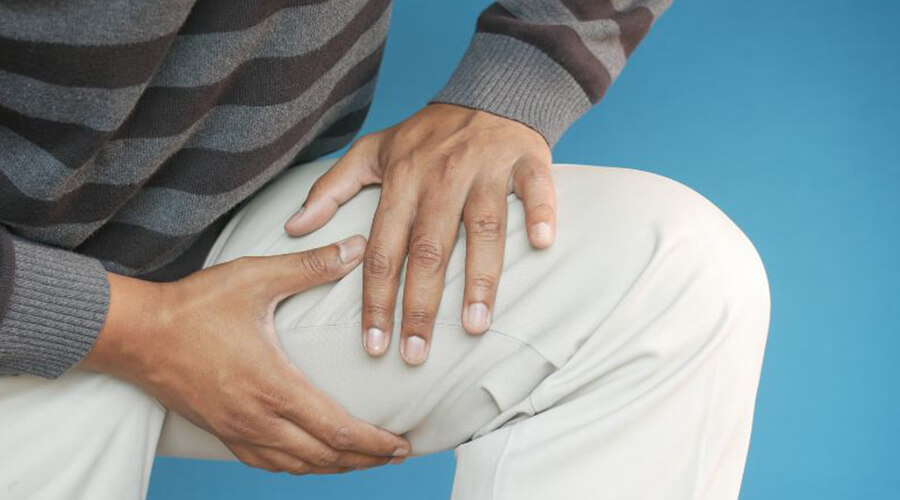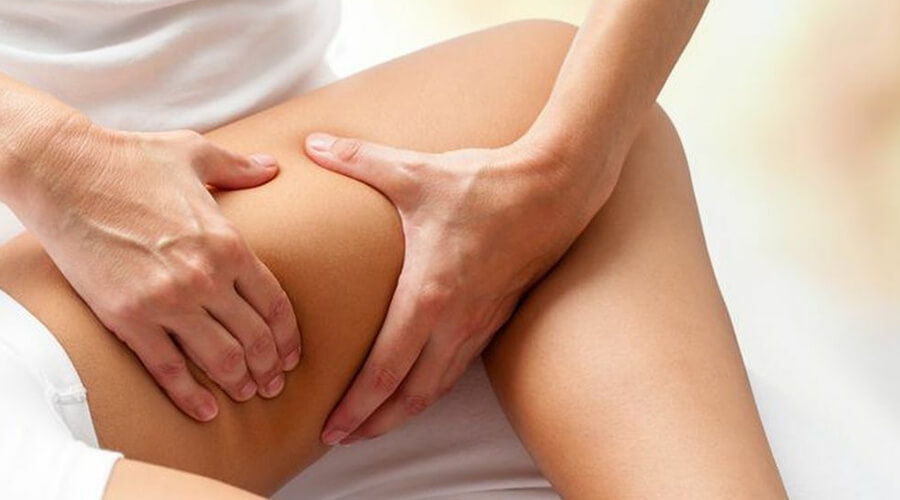
Pain in the inner thigh is described in two ways. It can be a sharp pain or a dull aching pain.
It can be accompanied by a number of complaints such as muscle weakness, restriction of movement, inflammation or even a clicking sensation during movement.
Why do my thighs cramp or what are the causes of thigh cramp
The most common causes of thigh cramps are physical exertion, sudden movements, poor posture, excessive exercise, circulation problems, vitamin and mineral deficiencies and stress.
Night cramps in the thighs can be caused by dehydration, magnesium deficiency or even circulation problems. Other causes include overwork, poor posture or sleeping position.
The most common causes of excruciating inner thigh pain.
Muscle spasm: muscle spasm in the thigh can occur in many cases. The muscles of the inner thigh, the hamstring muscles, can be easily injured by certain activities such as football, fencing, ballet or skiing. In addition to pain, there may also be swelling of the groin or a certain crackling sound. Always pay attention to proper stretching, as ongoing injuries can also cause chronic pain and other degenerative changes.
Bone problems: the most common form of arthritis is bone problems. The most common form of arthritis is osteoarthritis, where the cartilage in the joint is damaged and pain or stiffness develops. The bone condition can also be hip impingement syndrome, which in more severe cases can lead to complete deterioration of the hip joint.
Hernia: The most common type of hernia is a hernia of the groin, which can develop from standing a lot and doing a lot of physical work. The inner thigh is associated with radiating pain.
Kidney stones: when kidney stones pass through the urinary tract, they are associated with severe pain in larger kidney stones. This pain can be felt in the inner thighs, but can also occur in the waist and lower abdomen. There may also be vomiting, nausea and pain when urinating.
Women’s problems: some women may experience pain in the inner thigh during pregnancy and menstruation. In these cases, it is a good idea to see a doctor for a check-up.
If you have severe inner thigh pain, you may be advised to seek medical advice. For an accurate diagnosis, a medical examination is recommended, where the doctor can determine the cause of the pain and recommend appropriate treatment.
Treatment of inner thigh muscle spasm.
In many cases, we can treat the symptoms of inner thigh muscle cramps really well ourselves, using a variety of practices and over-the-counter remedies.
-Lifestyle changes (exercise or even weight loss, which may include diet).
-Rest.
-Massage.
-Acupuncture.
-Hot and cold therapy.
-Non-prescription painkillers, antispasmodics.
Causes of inner thigh cramps
Cramps in inner thigh can develop for many reasons and the triggers can vary.
Muscle fatigue: Intense physical activity, prolonged exercise or excessive muscle work can cause muscle fatigue, which can lead to cramp in inner thigh.
Dehydration: Cramp inside thigh can occur due to insufficient fluid intake, that reduces the electrolyte balance in the muscles.
Electrolyte imbalance: electrolytes such as potassium, sodium and calcium are important for muscle function. Their deficiency or imbalance can cause muscle cramps.
Vitamin deficiencies: a lack of vitamins such as B vitamins (especially vitamins B1, B5 and B6), magnesium or calcium can also contribute to muscle cramps.
What can you do to relieve thigh cramps?
Thigh cramps usually occur when the muscle contracts suddenly and forcefully. The cramp is usually painful and uncomfortable and lasts for a few minutes.
Stretch: If you are experiencing cramping in your thighs, stretch the muscles immediately. Pull your leg towards your head, then bend your knee and grab your ankle. Pull your ankle towards you and hold the position for at least 30 seconds.
Massage: massage the spasmodically contracted muscle. Gently massage the area and try to relax the muscle. If there is no one to help, a massage stick or tennis ball can also help.
Warm-up: If you have frequent thigh muscle spasms, it is a good idea to warm up the muscles beforehand. A light walk or stretch can help prepare the muscles for exercise.
Adequate hydration: insufficient fluid intake can contribute to hamstring cramping, so make sure you drink enough water.
Magnesium: Magnesium plays an important role in muscle function. Magnesium is important in the functioning of the muscles. Eating magnesium-rich foods or taking magnesium supplements can help relieve cramps.
Causes of inner leg cramp
Inner leg cramps are an unpleasant sensation caused by a sudden contraction of the muscles. It can often be painful and usually lasts for a short time. Leg cramps can be caused by many different things and in most cases are harmless. Some common causes include dehydration, electrolyte imbalances, overuse, overuse of leg muscles or nervous system disorders.
What can we do about leg cramps?
The most common cause of leg cramps is muscle overuse, fatigue or lack of blood supply to the muscles. To prevent this, it is important to exercise and rest regularly and to eat enough food containing potassium, magnesium and calcium. Night cramps in the thighs can also be attributed to these causes. If the cramp has already developed, it is recommended to stretch and massage the sore muscle and to warm the area. Temporarily changing your body position may also help.
Magnesium for muscle cramps, can it help?
The deficiency often causes muscle cramps, so supplementing with magnesium can help relieve cramps. Magnesium supplementation can be done through oral supplements or by injecting it into muscles.
Of course, treatment can be influenced by exactly what the problem is.
In case of pregnancy, breastfeeding, hernia, kidney stones, suspected musculoskeletal causes or even deep vein thrombosis, it is recommended to consult a doctor before starting the treatment.

Related products
-
 Herbal Master Balm$44.99
Herbal Master Balm$44.99 -
 Maximum Balm$49.99
Maximum Balm$49.99 -
 Black Comfrey Balm$40.99
Black Comfrey Balm$40.99 -
 Varikoflex Balm$49.99
Varikoflex Balm$49.99


